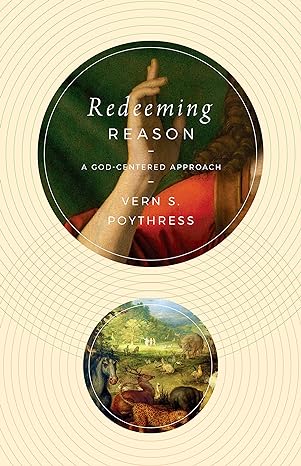A Book Review from Books At a Glance
by Darren Bradley
Summary
Books written by Vern Poythress typically challenge the reader to raise the bar in his intellectual thinking, and Redeeming Reason is no exception. In Redeeming Reason, Poythress desires to “explore how human reasoning depends on God” (p. 1). Poythress narrows this broad thesis by adding a sub-thesis: “We will consider how the use of analogy is pervasive in reasoning and how analogy depends on guidance from a larger context” (p. 1). To coherently walk the reader through his arguments, Poythress uses Chapter One to make sure the reader understands the starting point, writing, “So the Bible, as infallible verbal revelation from God, is our source of true knowledge in our present discussion” (p. 10). Poythress then breaks the book into six parts, with three or four chapters in each.
Part One of Redeeming Reason seeks to connect human rationality and God’s rationality, laying a foundation for his argument to prove his thesis, which is made throughout the rest of the book. A key quote from part one is, “The archetype is found in the fact that the Son is the eternal image. Mankind is a derivative or ectypal image. Since human rationality is a gift of God, among many other gifts, it too is derivative. Human rationality reflects divine rationality” (p. 31). Here, Poythress not only reminds the reader that God is the foundation but also uses it as a jumping-off point for his argument regarding the pervasiveness of analogy.
For Part Two of the book, Poythress guides the reader to understand what an analogy is, the laws of logic, and how analogy is connected to God through the Trinity. Bringing part two to a close, Poythress writes, “Thus the three laws of logic are expressions respectively of the three aspects of meaningful units, the aspects of contrast, variation, and distribution. These three aspects in turn are reflections of the three persons of the Trinity. The laws of logic reflect the Trinity … they reflect the character of God” (pp. 72-73).
To help readers understand the various kinds of analogy, Poythress uses Part Three to show how analogy interacts with different types of reasoning. Poythress emphasizes the importance of analogy to reason when he states, “All in all, many kinds of reasoning use analogies as a crucial element in moving to conclusions” (p. 85). Continuing to show the importance of analogy to reason, Poythress uses Part Four to help the reader understand the principles required to use analogy. Additionally, Poythress maintains the connection of analogies to the Trinity, writing, “Since any one analogy involves attention to norms, to situation, and to personal acts of judgment, any one analogy reflects the three perspectives on ethics and also then reflects the Trinity” (p. 117).
Part Five is about how perspectives connect with rationality and with analogies. Poythress writes, “Our human reasoning uses both analogies and perspectives. In both ways, we are dependent on ways in which God has organized the world and organized our knowledge. It is God who is the ultimate source, whose patterns are reflected in human reasoning” (p. 137). The concluding two chapters make up Part Six, and Poythress uses these to connect analogies with the simplicity of God and then provides practical examples of analogies to discuss the doctrine of God.
Evaluation
Redeeming Reason is a challenging book to read. Poythress’s use of philosophical logic in his arguments can sometimes leave the reader dizzy. However, Poythress skillfully uses examples, including Scripture and weather models, to help the reader understand. Additionally, Poythress uses multiple diagrams and charts throughout the book to clarify what he is saying. As the reader continues through the book, points made by Poythress earlier in the book suddenly begin to make sense. Ultimately, Poythress makes excellent use of his arguments as he proves his thesis and sub-thesis statements.
One of the book’s strengths is that the reader finds himself employing analogy and perspective, just as Poythress describes. For instance, when speaking about the three laws of logic, Poythress states, “Distribution exists in interlocking relation to contrast and variation. This interlocking has in back of it the reality of the Trinity … Contrast, variation, and distribution (CVD) interlock … so likewise, the three laws interlock … We cannot actually have one of the three (CVD) without tacitly depending on the other two” (pp. 70-71). This is analogous to having a robust understanding of biblical doctrine. The ability to have a strong understanding of any doctrine depends on the robustness of the knowledge of other biblical doctrines. There is an interlocking relationship between all the biblical doctrines due to the reality of the Trinity.
A weakness, which may also be a strength, depending on the reader’s viewpoint, is Poythress’ use of his previous work. Not only are the majority of the citations from Poythress’ works, but he also cites more than ten of his previous works, and therefore, some of his arguments become summaries of what he has already written. The weakness is that the fullness of the argument for that point is in a different book. The strength is that if the reader is unconvinced by Poythress’ argument and wants to delve deeper into the argument on that particular point, he is pointed to a resource for that deeper dive.
Although not an easy book to read, it is one that those with a desire for philosophy and apologetics will find helpful and interesting. This book will stimulate the reader’s mind to think deeply about how he uses his reasoning and the foundation for all human reasoning.
Darren Bradley
